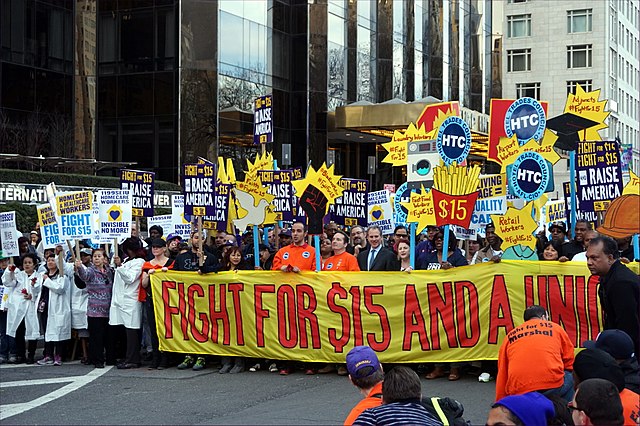Shortages in Venezuela of food staples and basic necessities occurred throughout Venezuela's history. Scarcity became more widespread following the enactment of price controls and other policies under the government of Hugo Chávez and exacerbated by the policy of withholding United States dollars from importers under the government of Nicolás Maduro. The severity of the shortages led to the largest refugee crisis ever recorded in the Americas.
Image: Venezuelan eating from garbage
Image: Escasez en Venezuela, Central Madeirense 8
Image: People lines in Venezuela
Shelves filled with the same type of product.
Price controls are restrictions set in place and enforced by governments, on the prices that can be charged for goods and services in a market. The intent behind implementing such controls can stem from the desire to maintain affordability of goods even during shortages, and to slow inflation, or, alternatively, to ensure a minimum income for providers of certain goods or to try to achieve a living wage. There are two primary forms of price control: a price ceiling, the maximum price that can be charged; and a price floor, the minimum price that can be charged. A well-known example of a price ceiling is rent control, which limits the increases that a landlord is permitted by government to charge for rent. A widely used price floor is minimum wage. Historically, price controls have often been imposed as part of a larger incomes policy package also employing wage controls and other regulatory elements.
The maximum retail price (MRP) of this bottle of water in Sri Lanka is 90 Rupees
A World War II-era shop display promoting price controls.
Protesters call for an increased legal minimum wage as part of the "Fight for $15" effort to require a $15 per hour minimum wage in 2015. A government-set minimum wage is a price floor on the price of labour.
World War II poster about US price controls








